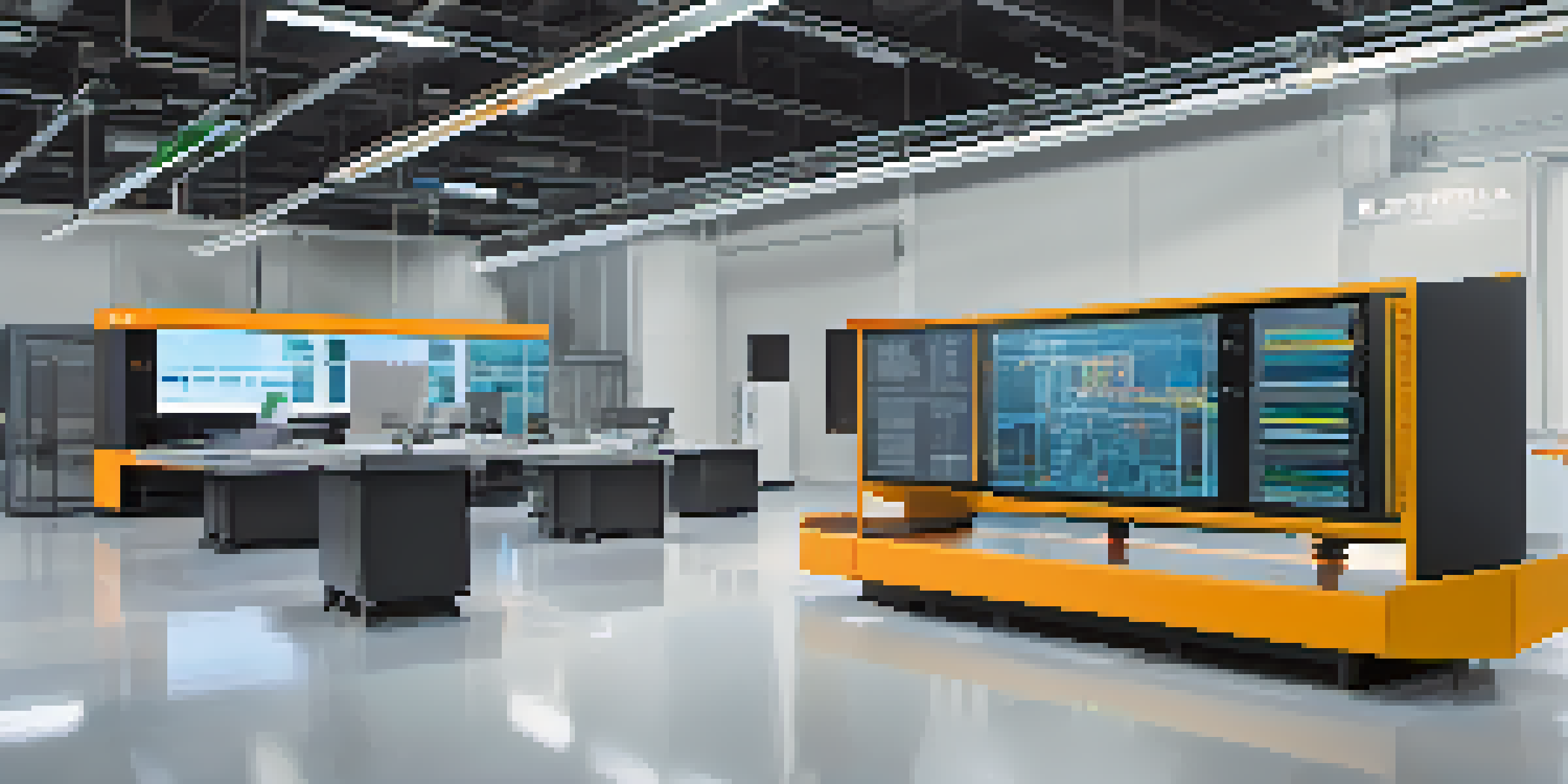Understanding Digital Twins: A Comprehensive Overview

What Are Digital Twins? A Simple Definition
At its core, a digital twin is a virtual representation of a physical object or system. Imagine having a digital clone of a factory, a car, or even a human body. This clone mirrors its real-world counterpart in real-time, allowing for better insights and understanding.
The digital twin is a powerful concept that can unlock tremendous value for organizations through innovative insights and data-driven decisions.
The concept of digital twins originated in the manufacturing sector but has since expanded into various fields, such as healthcare, smart cities, and even agriculture. By simulating the behavior of physical assets, digital twins help organizations optimize performance and predict failures.
In essence, digital twins bridge the gap between the physical and digital worlds, enabling businesses to make data-driven decisions and enhance efficiency. It’s like having a backstage pass to the inner workings of your assets.
The Evolution of Digital Twins in Technology
Digital twins have evolved significantly over the past few years, thanks to advancements in technology such as the Internet of Things (IoT) and big data analytics. Initially, these models were used primarily for monitoring, but now they also play a crucial role in predictive maintenance and optimization.

As sensor technology improves and data becomes more accessible, the accuracy of digital twins continues to grow. This evolution allows for real-time updates and adjustments based on the actual performance of the physical object they represent.
Digital Twins Enhance Real-Time Insights
Digital twins serve as virtual replicas of physical objects, providing real-time data that helps organizations optimize performance and predict failures.
Today, digital twins are not just static models; they are dynamic entities that evolve with their physical counterparts. This rapid evolution is helping industries innovate and streamline processes like never before.
Key Components of a Digital Twin
To understand how digital twins work, it's essential to recognize their key components. These typically include a physical asset, a digital model, and the data that connects the two. Think of it as a three-legged stool where each part supports the overall function.
Digital twins are not just a trend; they represent a fundamental shift in how we approach product design, production, and maintenance.
The physical asset is the real-world object, while the digital model is its virtual counterpart created using software and data. The data acts as the glue that binds these two components together, providing real-time insights and updates.
Without any one of these components, the digital twin cannot operate effectively. This interconnection is what makes digital twins so powerful, allowing for continuous monitoring and analysis.
Applications of Digital Twins Across Industries
Digital twins are versatile tools used across various industries, from manufacturing to healthcare. In manufacturing, for instance, companies use digital twins to simulate production processes, identify bottlenecks, and optimize workflows.
In healthcare, digital twins can represent patients, enabling personalized treatment plans based on individual health data. This approach can lead to more effective and tailored medical interventions.
Broad Applications Across Industries
From manufacturing to healthcare, digital twins are being utilized to improve processes, personalize treatments, and enhance operational efficiency.
Furthermore, industries like energy and transportation are leveraging digital twins for predictive maintenance and improved operational efficiency. The applications are vast and varied, demonstrating the technology's potential to transform multiple sectors.
Benefits of Implementing Digital Twins
The benefits of digital twins are substantial, with organizations experiencing improved efficiency, reduced costs, and enhanced decision-making capabilities. By analyzing data from the digital twin, companies can identify trends and make informed choices.
Digital twins also facilitate better collaboration among teams by providing a shared virtual space to visualize and interact with data. This collaborative approach can lead to faster innovation and problem-solving.
Additionally, the ability to predict issues before they arise means that businesses can minimize downtime and increase productivity. In short, digital twins help organizations stay ahead of the curve.
Challenges of Digital Twin Implementation
Despite their numerous advantages, implementing digital twins comes with its own set of challenges. One significant hurdle is the integration of data from various sources, which can be complex and time-consuming.
Moreover, ensuring the accuracy and reliability of the digital twin requires a robust data management strategy. Inaccurate data can lead to misguided decisions and undermine the benefits of the technology.
Future Innovations in Digital Twins
With advancements in AI and machine learning, digital twins are expected to become more sophisticated, offering deeper insights and becoming commonplace across various sectors.
Lastly, there is a need for skilled professionals who understand both the technology and the specific industry context. Bridging the gap between IT and operational technology is crucial for successful digital twin deployment.
The Future of Digital Twins: What Lies Ahead?
The future of digital twins looks promising, with ongoing advancements in AI and machine learning set to enhance their capabilities. As these technologies mature, digital twins will become even more sophisticated, enabling deeper insights and more accurate predictions.
We can also expect an increase in the integration of digital twins into everyday consumer products, making this technology accessible to a broader audience. Imagine having a digital twin of your home that optimizes energy usage based on your habits.

Ultimately, digital twins are likely to become a standard practice across industries, shaping the way we design, manufacture, and maintain products and services. The potential for innovation is immense, and the journey has only just begun.